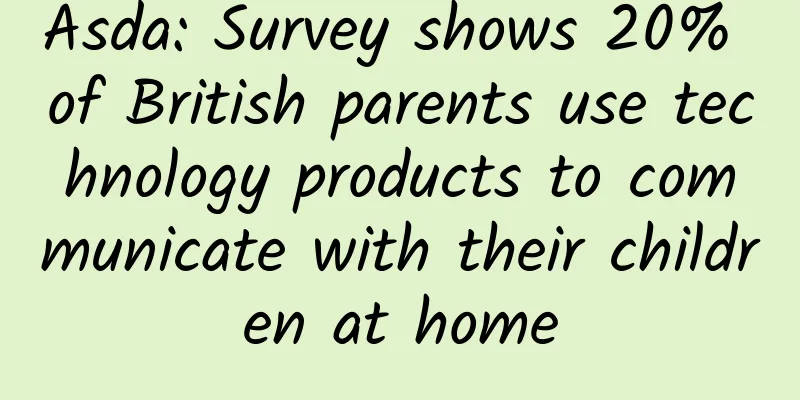Asda: Survey shows 20% of British parents use technology products to communicate with their children at home

|
According to foreign media reports, the theme of "how technology can promote more communication" has a new argument: a recent survey in the UK found that one in five parents use technology products to talk to their children (parents and children live in the same home). A recent national survey conducted by Asda found that parents are increasingly using technology to communicate with their children within the family, such as calling them to eat or telling them to do housework. The most common technology use by parents was texting, at 55 percent, followed by Facebook at 20 percent and cell phone calls at 13 percent. For parents, the most common message sent was "Dinner is ready," at 13 percent of all messages. Parents also frequently sent messages like "Clean your room" and "Do your homework." Nathan Mills, technology expert at Asda, said: “The reality is that technology is allowing us to be in touch with more people more often than ever before – both outside and at home. For example, parents have always found it difficult to communicate with their teenagers, but now low-cost technology is giving parents a hotline to their children’s rooms.” It's easy to send a text message to the kids to get them to the dinner table or to get them to finish their homework. Most homes don't have walkie-talkies, and now mobile phones can function like them. Group messaging apps are useful when a family member needs to send a text message to everyone in the family. This shows that mobile phones can shorten the distance between people in a variety of situations, even between family members living under the same roof. One industry insider commented: I was initially concerned that parents were using phones as a way to avoid real, face-to-face interaction with their kids. It’s more convenient to nag them about homework than to nag them face-to-face. We already have a lot of communication technology to avoid direct conversation, which sometimes leads to misunderstandings because it’s often difficult to understand what people mean when you hear what they say but don’t see their facial expressions and body language. But then I heard from some parents that it helps them communicate with their teenagers, who aren’t always excited to talk to their parents about things. Many parents do their best to communicate with their children, and using the tools that their children like best is a helpful practice. For those who don’t have children and teenagers at home, this may seem strange at first, but it is becoming the way many families communicate. |
<<: How to spend the 100 days after a bone injury surgery
>>: What to do if your child accidentally takes medicine
Recommend
Remedies for getting caught in the rain during menstruation
There is more rain in the summer. If you are not ...
The "Ice" Adventure in the Operating Room: Hypothermia and Life Safety
Author: Zheng Yan, Liaoning Cancer Hospital Revie...
Can pregnant women eat mustard?
Pregnant women are not suitable for eating mustar...
[Medical Q&A] What is the difference between spectral Doppler ultrasound and color Doppler ultrasound?
Planner: Chinese Medical Association Reviewer: Wa...
Diabetes is the "black hand" of sudden death! Danish research
If you have diabetes, your risk of sudden cardiac...
Can a 17-year-old girl get an abortion?
Many scholars believe that sexual needs, like the...
How many days does a woman need to stay in the hospital for induced abortion?
Induced abortion is a surgery to terminate pregna...
What should I do if I have diarrhea in the sixth month of pregnancy?
Pregnancy is an important period for our female f...
Is it normal to have red urine, painful urination, frequent urination, and urinary incontinence after cystoscopy?
Author: Xu Tao, Chief Physician, Peking Universit...
The best and fastest way to enlarge breasts through dietary supplements
Breast enhancement is an everlasting topic for fe...
What to do if polycystic ovary syndrome is thin
Because the thickness of each woman's uterus ...
What is the reason for food sticking to the pan? How to solve the problem of food sticking to the pan
We all know that many people will have the proble...
Endocrine disorders and infertility
Once a person's endocrine system is out of ba...
How to choose Kyoho grapes? Can I eat more Kyoho grapes?
Grapes are one of the most commonly consumed frui...









